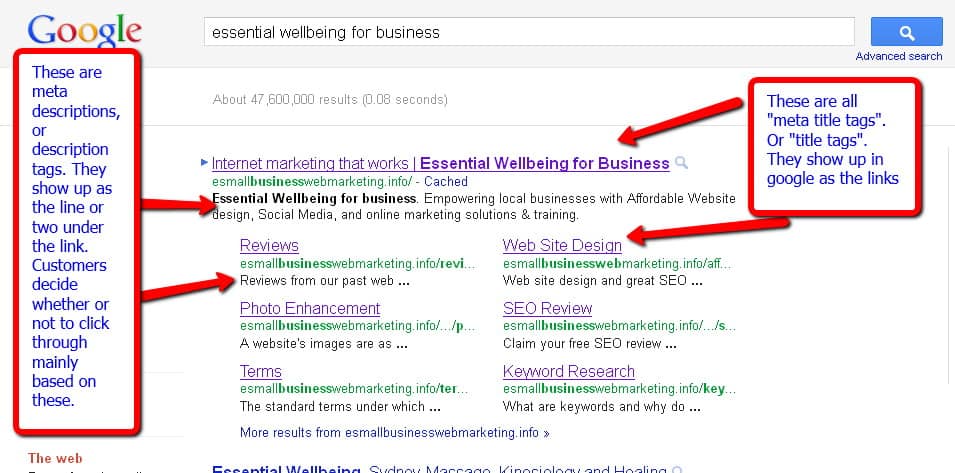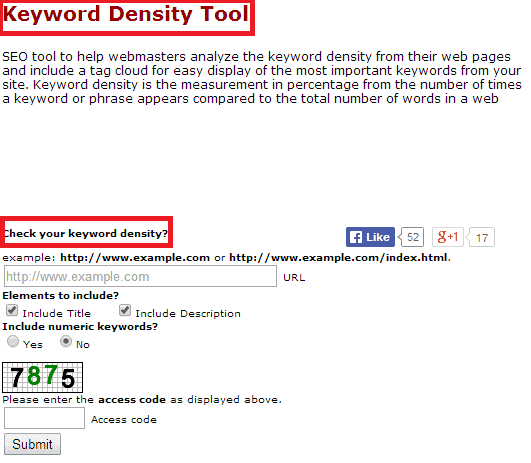Table of Contents

How you are optimizing your presence to make sure that your voice gets heard? If you want to be visible to your target audience and see the peak performance of your website, then you need to stay up to date with SEO (Search Engine Optimization).
The most important fundamental aspect of online marketing is SEO. And, one of the vital areas you need to focus in it is On-Page SEO.
On-Page SEO comprises of all the internal elements of your website which are optimized to make it more search-engine friendly.
In this article, we have gathered up the main factors that you need to keep in mind and lay emphasis on while doing On-Page SEO of your website.
#1 Page Titles
Your page title (meta-title) plays an essential role in your SEO strategy. Your page and posts both should have appropriate and unique titles. It should include the main keywords of your page. The more optimized and attractive it will look the more number of clicks you are likely to get. And, more number of clicks your post gets, the higher it will rank on SERP (Search Engine Result Page).
You should not repeat the same keyword again in your title tag as it hampers your ranking. A Page title which contains the central idea of your content always works in your interest. It is also recommended to keep the length of the title under 70 characters.

#2 Meta Descriptions
Meta descriptions are displayed on SERPs and help you attract the searcher to visit your site. They are basically snippet of information present below the link of your search result. It describes the content that your page contains.
With the help of an effective Meta description you can convince the searcher to click on your website. Most of the marketers neglect to focus on this but it can help you bring potential traffic. It should also contain targeted and relevant keywords.

#3 Meta Tags
These are the html keywords that don’t appear on the Search Engine Result Page (SERP) but only in the code of your page. They are not visible to the readers like Meta description. Your Meta tags should include all the suitable keywords related to your content.
Search rankings read your Meta tags to know that what your page is all about and rank it accordingly. You can greatly improve your site’s ranking by researching well for keywords to be used in Meta tags.

#4 URL Structure
The URL Structure is an important factor of On-Page SEO. It is highly recommended to use search engine friendly URLs for providing better crawling experience to users. Those which include targeted keywords and are well-optimized perform better. Shorten URLs always work better as it makes brand recalling easy.
Points which should be considered in URL Structure are as follows
- Permanent Links: unique URL for each page
- User Sitemap: contains structure of your website
Special characters should be avoided; it should only contain alphabets and words. A well-optimized URL structure is supported by most of the web browsers and prompts user to click on it.

#5 Keyword Density
No doubt including relevant keywords in your content is important but if you put too many, then search engines are likely to spam your website. It is recommended to keep your keyword density around 1.5% and it should be a mix of LSI (Latent Semantic Indexing) keywords.
You can use formatting options for better use of keywords. You should include your targeted keywords in the first paragraph and as well as last paragraph or conclusion. You can even highlight, underline or put the keywords in italics to make them stand out.

#6 Image SEO
Images are important to grab the attention of visitors. The website traffic can be effectively improved with the help of visual appeal. To optimize images for SEO you must include Descriptions and Alt Text in it.
Inserting images with proper Alt Text compliments to the information you have provided. Such images include title and these titles are considered the same way like page titles. Large images slow down the speed of your site, so you should use compressed images increase user engagement.

#7 Internal Linking
Internal linking is one of the major aspects of SEO as with the help of it you can direct traffic to your other pages and posts too. Putting links in your blog posts that link the readers to your other posts of your blog is referred to as Internal linking. While interlinking you should always keep the anchor text as a keyword.
The ranking of your website effectively improves with the help of internal linking, as search engines find your content a useful piece of information. A great way to improve your SEO is by doing relevant interlinking.

#8 Heading Tags
The content you write should be in small paragraphs and sections. And, the tags given to these headings are called H1, H2 and H3 etc. Breaking your content helps you rank your website higher on SERP.
It also becomes easier for people to read when information is presented in the form of short sections.

#9 Word Count Per Post
If you want your content to perform well on search engines, then your posts shouldn’t be too short, as it is considered to be less informative. A general information based blog post should at least be of 700 words.
The content you write should be well researched and informative for the audience. And, it should contain your relevant and targeted keywords in the right places.
#10 External Linking
Outbound links are the links from other domains or websites. But the external links you put should be relevant to your content. You should do external linking to the trusted websites only. If you provide external links, then your site ranks higher on search engines.
You can choose Nofollow link option or less non-trustworthy sites, as it does not allow search engine bots to follow that link. And, if the external link you are providing is from a trusted one, then you can use Dofollow links.

#11 Quality Content
Last but not the least, as content is still the king. The most important aspect of SEO is that you should have quality content. You should provide value to readers with your engaging content. When readers spend more time on your blog your bounce rate increase and so do your ranking.
A well-researched informative article always appeals to the readers and helps your website to climb the ladder of ranking.
So, if you want your visitors to knock on your doorstep, then optimizing your site as per On-Page SEO is must. Incorporate the above mentioned factors to rank higher on Search Engine Results Page and increase the relevancy.
Table of Contents





Hello dear !
this article is very much informative and I found it is great ! Blog is much more informative & well described in easy language.
thanks !
Thank you, a very descriptive post indeed. Sort of explains in a gist the whole on page SEO scene.
Thanks Rahul!
Thank you very much for the tips. I really love the simplicity of the posts. So many bloggers especially the newbies only focus on External SEO, thereby neglecting the internal one. I hope many will learn after seeing this…
nice article..
very nice article about on-page optimization
Brilliant article. The information I have been searching precisely. It helped me a lot, thanks. Keep coming with more such informative article. Would love to follow them.
Thanks Anjali. Keep coming!
Thanks for sharing great article, learnt a lot from these tips. Its really informative and helpful.
Thanks Amruta.
Thank you! Very informative Indeed.
Thanks Jaldeep.
I seriously love your website… Excellent colors & theme.
Did you develop this site yourself? Please reply back as I’m wanting to create my very own blog and would love to find out where you got this from or just what the theme is named.
Thank you!
Thank you, Katherine. The theme name is Performag.
Thanks for sharing this information with us. It was really helpful. I got to know that image submission really helps in improving the ranking of the website as it is a part of SEO off-page and its very effective.
You’re welcome, Udit. Glad you learned some new stuff!
Thank you for this article… this helps me a lot.
Thanks a lot for the kind words, Kshitij!
thank you for this amazing article this is very helpful
You’re very welcome!
thanks for the wonderful information about SEO techniques.
Jagannath, glad you liked it!!